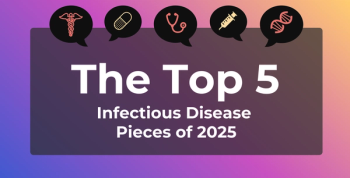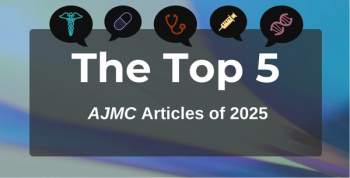As funding policies adapt to the evolving treatment landscape for patients with HER2-positive mBC, we can expect a significant increase in cost per patient in this setting….As the costs of novel therapies are likely to be higher than currently available biosimilars, there will be significant implications for both private payer and public payer health care systems.
Investigators Estimate Cost of Extending HER2-Directed Therapy With Biosimilars in British Columbia
Costs of extending human epidermal growth factor receptor 2 (HER2) therapy for patients with metastatic breast cancer were estimated in a retrospective study.
Eligibility to continue receiving human epidermal growth factor receptor 2 (HER2)-suppression therapy for metastatic breast cancer (mBC) in British Columbia is not unlimited. In a retrospective study presented at the 2021 San Antonio Breast Cancer Symposium, investigators sought to estimate the costs per patient (N = 230) of extending therapy beyond coverage limits.
Costs of extending therapy were based on trastuzumab biosimilar costs.
Of the patients who met inclusion criteria, 51% (117) were eligible to continue treatment beyond a second covered line of therapy. Of those, 86 (37% of the entire cohort), were found to have accessed continued HER2-directed therapy. Investigators said 26 (11% of the full cohort) were eligible but did not receive further HER2 therapy.
Patients not eligible for consideration of further HER2-directed therapy were ineligible due to stable disease on current treatment or inability to tolerate or benefit from further treatment.
Costs of extending therapy beyond what current policy allows were estimated at $44,000 per patient, which the study authors said would probably increase significantly as novel therapies for HER2-positive mBC emerge.
HER2-suppressive therapy with trastuzumab (Herceptin or biosimilar) has been shown to improve progression-free survival (PFS) and overall survival (OS) in multiple randomized studies. HER2-expressing breast cancer spreads more rapidly and outcomes are poorer than for non-HER2 cancer.
Currently, British Columbia public health policy supports at least 2 lines of HER2-suppressive therapy in mBC. However, multiple therapeutic regimens have made it more difficult to understand patient eligibility, and there is a lack of knowledge of what it would cost to extend HER2-suppressive therapy to those who need it, the authors of the study wrote.
They sought to estimate the proportion of patients with HER2-positive mBC eligible to receive more than 2 lines of systemic therapy and to determine the proportion of patients who continued on to further lines of HER2-suppressive therapy despite lack of public funding.
For this study, they drew data from 2 public sources of health care claims information: the British Columbia Breast Cancer Outcomes Unit and the British Columbia pharmacy database (PharmaNet). From these, they identified patients who received any HER2 therapy for mBC between 2013 and 2018. During that period, trastuzumab plus pertuzumab and ado-trastuzumab emtansine (TDM-1) were standard options for care.
Investigators analyzed number of lines received, specific treatments, and fitness to continue therapy beyond 2 lines. PFS and OS data also were evaluated. Costs of extending care were based on available treatments during the study period.
The median number of lines of therapy received by the study population was 3, but the maximum outlier was 12; and median cycles of therapy beyond second line for patients eligible to continue treatment was 22.
“Median OS for those who continued HER2Rx was 58.6 months compared to 38.0 months for
those who were eligible but did not continue therapy, but this was not statistically significant (P = 0.13),” authors of the study wrote. “The vast majority of these patients are receiving continued [HER2 therapy] through either exceptional access or clinical trial, and very rarely through private pay or insurance.”
The estimated additional costs of extending therapy using trastuzumab biosimilars for patients who max out their HER2-directed therapy under current policy is $44,000 per patient, the investigators said.
Although 51% of patients with HER2-positive mBC were eligible for 2 lines of HER2-directed therapy, 23% did not access treatment owing to “prohibitive funding policies,” the authors wrote.
“As funding policies adapt to the evolving treatment landscape for patients with HER2-positive mBC, we can expect a significant increase in cost per patient in this setting….As the costs of novel therapies are likely to be higher than currently available biosimilars, there will be significant implications for both private payer and public payer health care systems,” they wrote.
Reference
Jackson EB, Corke L, Ohm H, Simmons C. Predicted financial impact of continued HER2-directed therapy in metastatic breast cancer: what is the financial toxicity in a public payer healthcare system? Presented at: SABCS 2021; December 7-10, 2021. Abstract PD8-09.
Newsletter
Stay ahead of policy, cost, and value—subscribe to AJMC for expert insights at the intersection of clinical care and health economics.









































